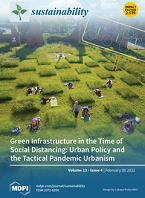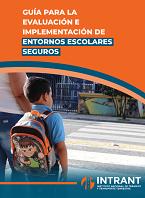-

“Not as safe as I believed”: Differences in perceived and self-reported cycling behavior between riders and non-riders
Sergio Useche, Javier Gené-Morales, Félix Siebert, Francisco Alonso, Luis Montoro
(2021). ArticleSustainability. Num.13(4), 1614
Cycling behavior remains a key issue for explaining several traffic causalities occurring every day. However, recent studies have shown how the assessment of the own safety-related behaviors on the road may substantially differ from how third parties assess them. Thus, the aim of this study was to evaluate the differences between cyclists’ self-reported behavior and the proxyreported behavior that other (non-cyclist) road users perceive from bike riders. For this purpose, this study used data from two samples: (i) 1064 cyclists (M = 32.83 years) answering the Cycling Behavior Questionnaire—CBQ, and (ii) 1070 non-cyclists (M = 30.83 years) answering an adapted version of the CBQ for external...
Cycling behavior remains a key issue for explaining several traffic causalities occurring every day. However, recent studies have shown how the assessment of the own safety-related behaviors on the road may substantially differ from how third parties assess them. Thus, the aim of this study was to evaluate the differences between cyclists’ self-reported behavior and the proxyreported behavior that other (non-cyclist) road users perceive from bike riders. For this purpose, this study used data from two samples: (i) 1064 cyclists (M = 32.83 years) answering the Cycling Behavior Questionnaire—CBQ, and (ii) 1070 non-cyclists (M = 30.83 years) answering an adapted version of the CBQ for external raters—ECBQ. The results show how the self-reported and proxy-reported behaviors of cyclists greatly differ in terms of all behavioral factors composing the CBQ model, i.e., traffic violations, riding errors, and positive behaviors. Also, external raters (non-cyclists) are those targeting significantly riskier behaviors than those self-reported by cyclists. These discrepancies between perceived behaviors may give rise to conflicting viewpoints on the interaction between bicycle riders and other road users. Therefore, this study underscores the importance of behavioral awareness, providing highlights for future studies on the behavioral interaction between cyclists and other road users. Results can be used to improve the road safety of all road users by giving indications on self-and proxy-perceived safety-related behaviors and visibility of protective riding habits.
Llegir més Ocultar DOI: 10.3390/su13041614 -

Guía Metodológica para Entornos Escolares Seguros en República Dominicana
Revisors: Francisco Alonso, Jorge Suárez, José Luís Velarte
(2020). LlibreLa guia té l'objectiu d'adaptar l'entorn escolar a les necessitats de nens, nenes i adolescents, per així disminuir el risc en els seus desplaçaments des de i cap als centres educatius. D'acord a les dades nacionals consolidats per l'Observatori Permanent de Seguretat Viària (OPSEVI), per a l'any 2019, de l'total de fatalitats produïdes pel trànsit, aproximadament el 14% van ser nens, nenes i adolescents menors de 20 anys, és a dir, fonamentalment en edat escolar. La Guia d'Avaluació i Implementació d'Entorns Escolars Segurs, és un document tècnic que conté la informació necessària i rellevant per dur a terme un pla efectiu que obtingui resultats a curt termini des del moment d'aixecament...
La guia té l'objectiu d'adaptar l'entorn escolar a les necessitats de nens, nenes i adolescents, per així disminuir el risc en els seus desplaçaments des de i cap als centres educatius. D'acord a les dades nacionals consolidats per l'Observatori Permanent de Seguretat Viària (OPSEVI), per a l'any 2019, de l'total de fatalitats produïdes pel trànsit, aproximadament el 14% van ser nens, nenes i adolescents menors de 20 anys, és a dir, fonamentalment en edat escolar. La Guia d'Avaluació i Implementació d'Entorns Escolars Segurs, és un document tècnic que conté la informació necessària i rellevant per dur a terme un pla efectiu que obtingui resultats a curt termini des del moment d'aixecament d'informació fins a la seva posterior anàlisi en àrees circumdants a els recintes escolars, així com els trajectes utilitzats per estudiants, el seu comportament amb relació a la mobilitat vehicular i vianants i la seva seguretat per al trasllat dels estudiants.
Llegir més Ocultar ISBN: 978-9945-9238-9-6






